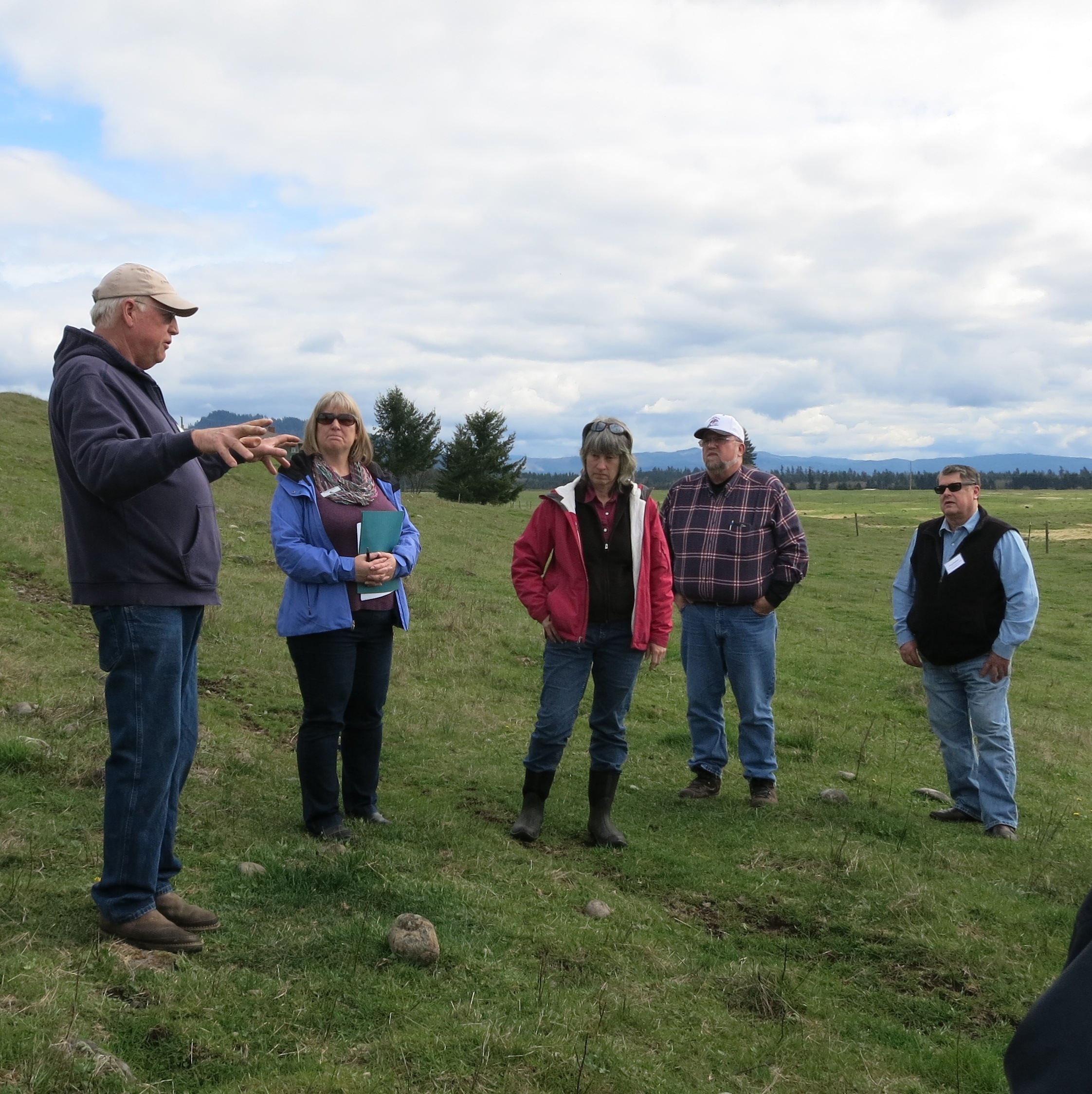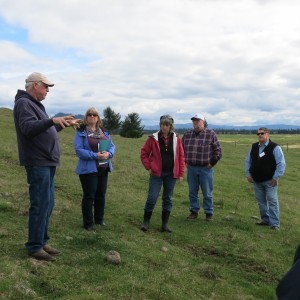
Submitted by Washington State Conservation Commission

Local, state, federal, and tribal partners from across Washington convened in Olympia last week to tour conservation projects in the area. The tour, hosted by Thurston Conservation District, was part of the bi-monthly meeting of the Washington State Conservation Commission (SCC)—the coordinating state agency for all conservation districts in Washington.
“There is nothing more valuable than taking partners out on the ground of project work by conservation districts,” said Kathleen Whalen, Administrator of Thurston Conservation District. “Such an opportunity provides them with a first-hand look at how we work to find creative solutions to natural resources issues; and, hear the perspectives of the landowners and partners we have worked with. This gives them a better understanding of agriculture in our local community.”
This was the first time since 2010 that Thurston Conservation District hosted the SCC meeting and tour. The agency’s 10-member governing board—representing state agencies, governor appointees, and conservation districts—meets six times a year in locations that rotate among the 45 conservation districts in the state.
The tour visited three sites showcasing a cross-section of projects involving Thurston Conservation District, including a rotational prairie grazing system, stormwater management on a small farm, and a large estuary restoration project aimed at enhancing and restoring important salmon habitat. Each project involved a mix of partners, including private landowners and farmers, local non-profits, local government, and state and federal agencies.
Fred Colvin, primary operator of Colvin Ranch, has enrolled in programs offered by Thurston Conservation District and the USDA Natural Resources Conservation Service that help him maintain a profitable ranch and valuable prairie ecosystem. The key, said Colvin, is to design conservation programs that meet both landowner and conservation needs.
“If you want private property owners involved with conservation goals, they need to be involved from the beginning,” said Colvin.
Colvin uses a rotational grazing plan on his ranch that benefits both the prairie and his bottom line. His cattle systematically graze and suppress non-native grasses, allowing native plants to flourish. And, he’s able to market Colvin Ranch grass-fed beef as a sustainably raised product throughout the South Sound region.
Colvin also enrolled in the South Sound Farm Link program launched by Thurston Conservation District in 2014. The program supports sustainable, local agriculture by providing a farmland database that connects farmers looking for land to landowners with property for lease or purchase. Colvin—one of over 30 people to enroll in the program so far—used the database to find additional grazing pasture for his cattle.
Clinton O’Keefe, current chair of the SCC and wheat farmer from eastern Washington, said Thurston Conservation District is not only helping landowners understand and afford conservation, they also are ensuring that landowners’ voices are heard, leading to more effective, feasible approaches to resource conservation.
“People who live and work on the land are uniquely qualified to develop solutions for conservation,” said O’Keefe. “By tailoring their programs and services to meet both state and landowner needs, Thurston Conservation District is enhancing the value of conservation for everyone.”
Conservation districts are non-regulatory, local providers of natural resources knowledge and on-the-ground expertise. They originated during the 1930s dust bowl era, when President Franklin D. Roosevelt called on landowners to form locally led conservation districts that would carry out cooperative solutions to soil and erosion issues. Today, every one of Washington’s 39 counties is represented by at least one conservation district, and they help landowners address a broad spectrum of natural resource issues.
The SCC is a state agency that works with conservation districts and other partners to engage landowners in voluntary stewardship. To learn more about the Washington State Conservation Commission, visit www.scc.wa.gov; or, to learn more about Thurston Conservation District, visit www.thurstoncd.com.



















































